ARTICLES
Chinkin
Chinkin is a decorative technique where you engrave patterns and drawing using a chisel on lacquerware after the final coating, then inserting gold and silver leaf/powder into the engraved groove. There are two basic engraving techniques: line engraving and point engraving. Also, changing blade shapes and engraving angle/depth can create an elaborate and three-dimensional decoration.
Process Overview

1 Okime
Draw a sketch on Okime paper using Chinese ink. Turn the paper over, then trace the lines of the sketch that can be seen through using a paintbrush. Dissolve titanium in water and use it as the paint for this process. Next, press the brush-drawn surface onto the lacquerware, and smear it using a spatula to copy the sketch onto the lacquerware.
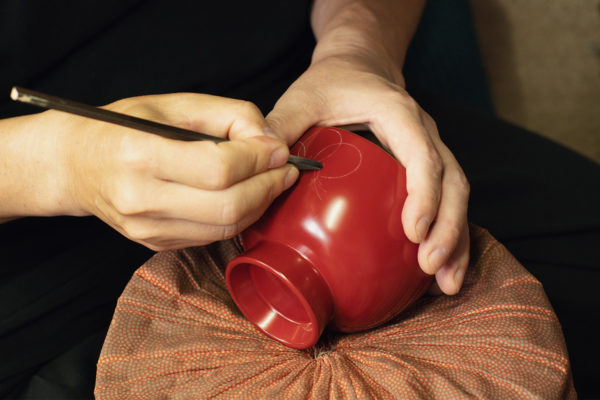
2 Subori
Following the copied sketch lines, first, engrave the contour using a chisel, then do a line or point engraving on the inside.
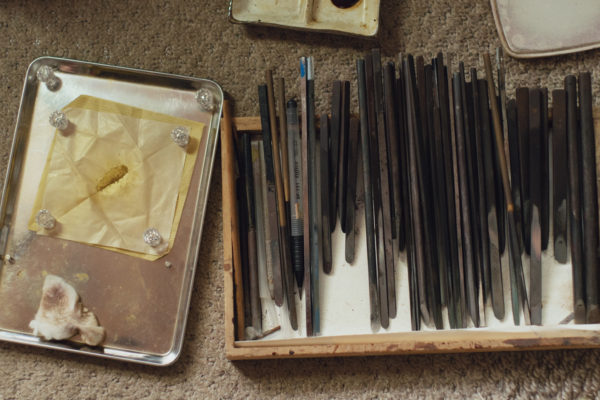
3 Lacquer imprinting
Imprint lacquer on Subori sections. Next, wipe off excess lacquer from the surrounding sections.
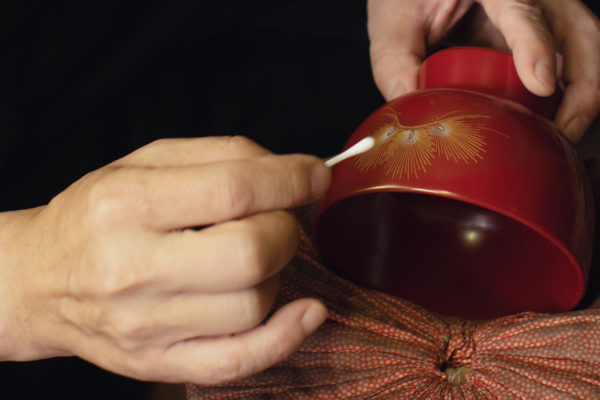
4 Hakuoki
Put some gold leaf on cotton, press it into the Subori groove tightly, and dry it under appropriately humid conditions.
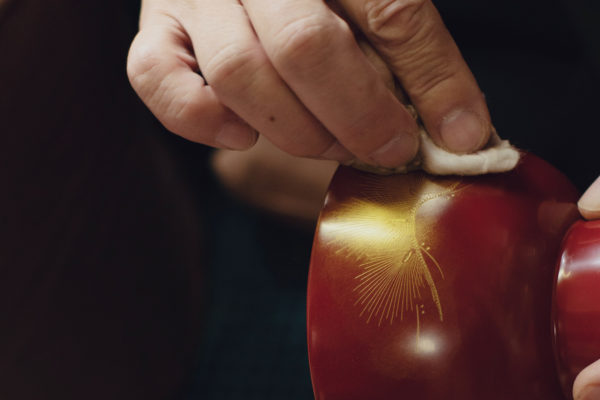
5 Finishing
Use Washi paper to wipe off excess gold leaf attached to sections outside the patterns.
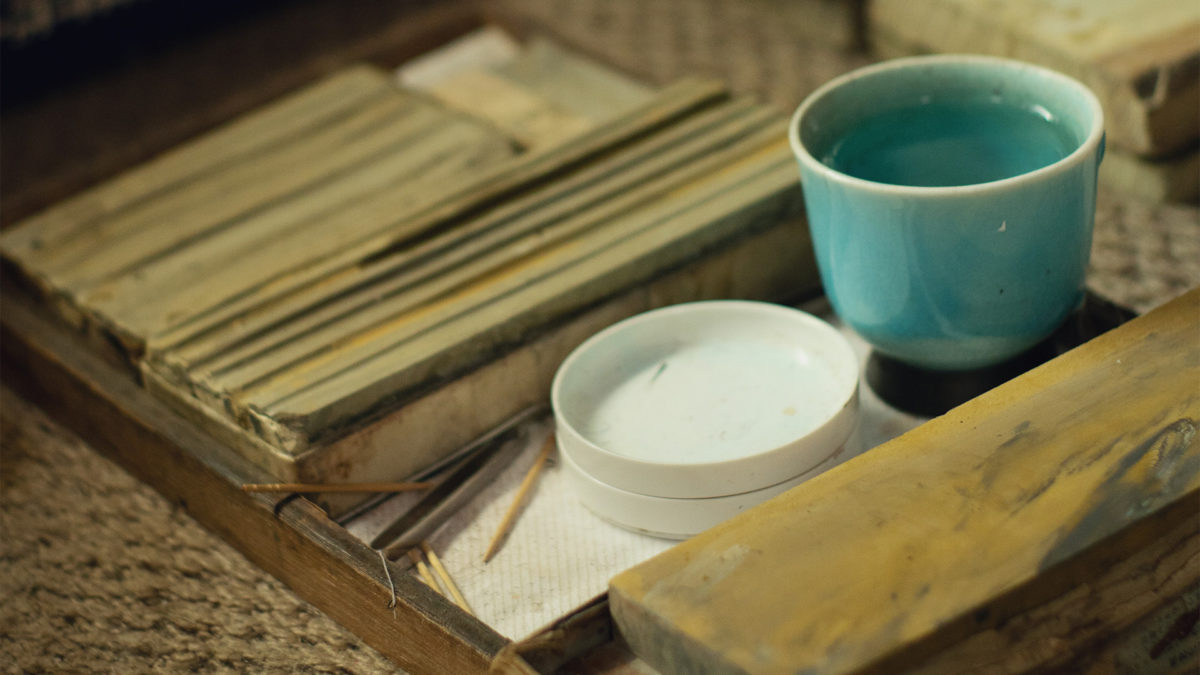
[Tools]
Chinkin chisel, powder tube, Mino Wahi paper, etc.
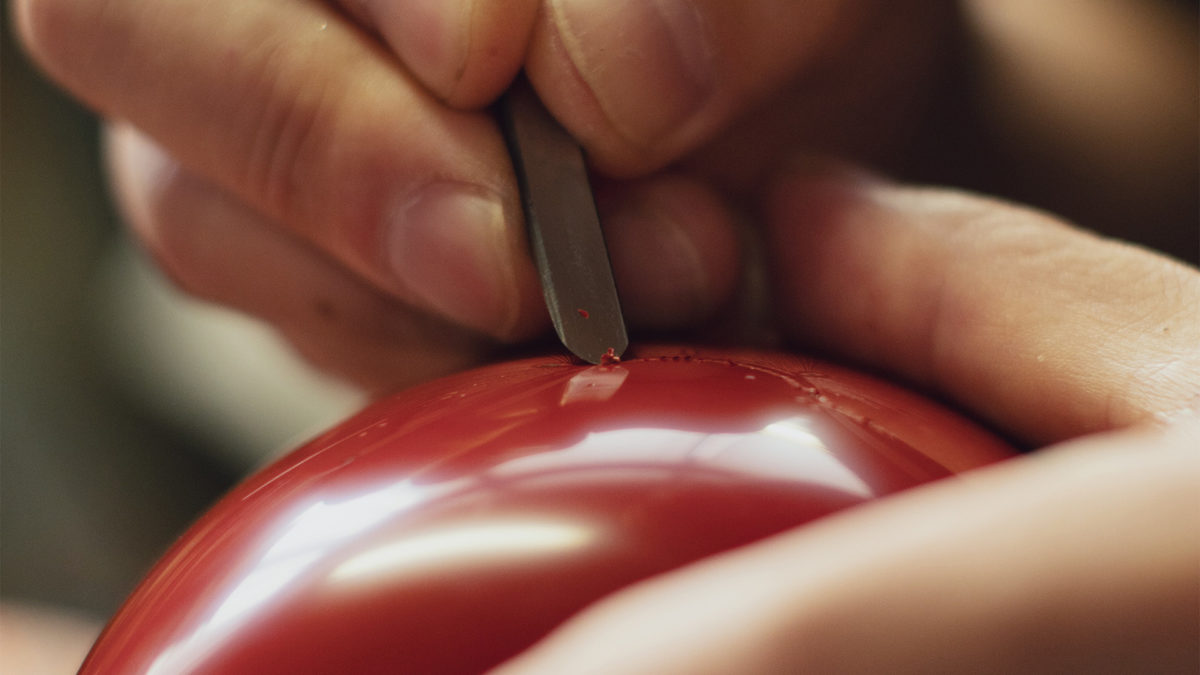
[Features and Use of Techniques]
Chinkin is said to have originated from a Chinese technique called Sokin. In comparison with Sokin, Chinkin developed uniquely in Wajima. Wajima Lacquerware is thick and durable because there are many layers of lacquer coating, and this was perfect for the Chinkin technique of engraving to draw patterns.
Chinkin patterns generally consist of lines and dots. The aggregation of these lines and dots creates the surface, then adding changes with various chisel depths, angles, and forces create various expressions like three-dimensionality, shading, and gradation.
The job of a Chinkin-shi begins by drawing a sketch on Mino Wahi paper based on a specified design. During this process, a Chinkin-shi is required to accurately copy the number of lines and core thicknesses without any error. Frequently, the same patterns are engraved repeatedly, so the originals of these sketches are created and kept safe by the Chinkin-shi.
The Chinkin-shi, Takahito Zenko, keeps tens of thousands of sketches in stock. He says they are all “valuable assets for a Chinkin-shi.”
“These sketches demonstrate how I completed this many jobs as a Chinkin-shi. They also show how there are many patterns that only I can engrave. Every Chinkin-shi has patterns that only they can engrave, and others are generally forbidden to copy these engraving without permission. When a senior Chinkin-shi that you are close to retires, he may pass on his patterns to you.”
Engraving starts based on the sketches, and this is when a Chinkin-shi tries the hardest to concentrate. You cannot redo the engraving, so not even a single chisel mistake cannot be overlooked. A Chinkin-shi does not leave the work desk until a particular pattern is completed because taking a break can “create subtle differences in the engraving and change the feeling of the patterns.”
“Engraving is followed by decorating. Many types of expressions are possible here, such as only adding gold powder, adding layers of silver powder, pasting gold leaf only on the core section, etc. You can also use various types of color powder as you can generally create colors you don’t have. There is also a finish where you feature the Subori feel without adding any gorgeous decorations. This technique is called Chinkoku, where you put carbon instead of gold powder and polish after doing Suriurushi.”
In addition to lacquerware, Takahito makes panels with engraved owl patterns that he designed. Some of his rare works include making fish prints upon request. Takahito said, “This is not my job. It’s my hobby.” However, he even has a special shelf for color powder used when making fish prints. His seriousness is that of a professional.
When we asked him about applications of the Chinkin technique, Takahito smiled and immediately replied, “There is something I want to engrave. I want to engrave the fish print of the fish that I caught.” Regarding the application, he continued, “Chinkin engraving is different from sculpting. It might be interesting to consider that.” Comparing and studying the difference between engraving in sculptures and Chinkin may clarify Chinkin’s unique features and be insightful for new applications.
Also, a Chinkin-shi designs unique patterns and freely engraves on the lacquer-applied surfaces. When considering potential applications, the first step would be to decide what kind of patterns to engrave on what kind of products with lacquer applied. Only products in which lacquer can be applied would be eligible, so the scope would be limited, but the scope of applications would still expand much more after considering new applications.
